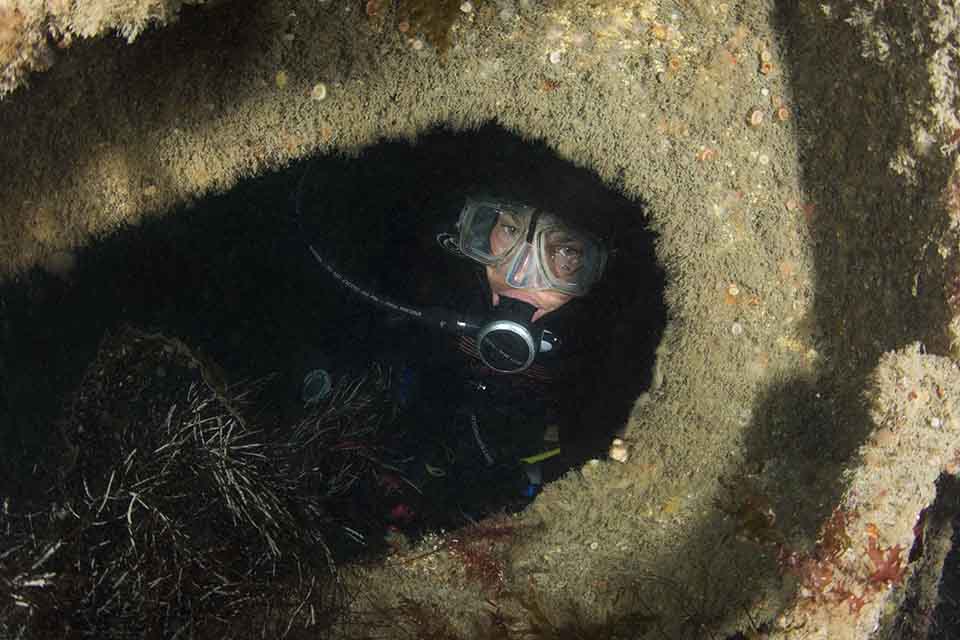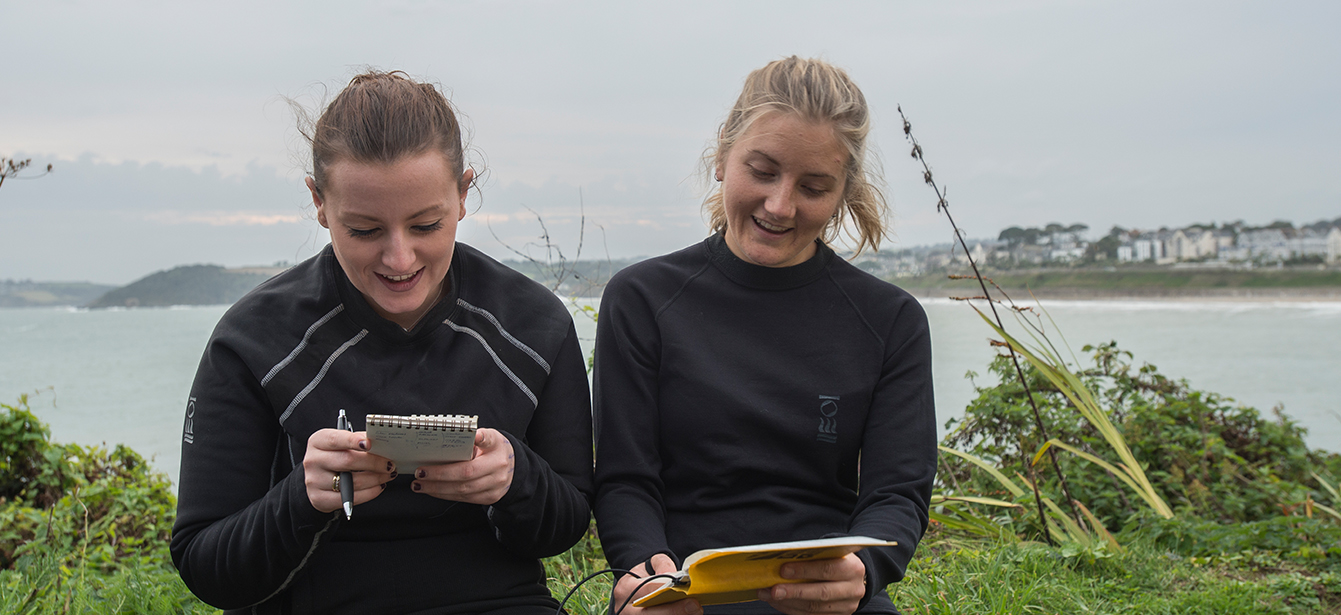
Inspired by diving the German fleet at Scapa Flow, First Class Diver Kristina Pedder has some tips to help develop your wreck diving skills.
Orkney has an outstanding collection of remnants from the two world wars, both on land and underwater. Where better to practice your wreck diving skills than on the amazing marine heritage in the great natural harbour of Scapa Flow, where the First World War German High Seas Fleet was scuttled in June 1919. Before you start your dive, here are 5 things you should consider!
1. Know your way around a wreck
Shipwrecks across the world range from those that look as if they could sail away right now, to those that have completely collapsed into a pile of scrap metal; but once they all shared similar features. If you know a little about the basic structure of a ship, it is surprising what you can recognise among the scrap and discover about the ship’s past.
Looking around the WW1 German wrecks in Orkney, it’s obvious that some features such as funnels decay quickly, others such as sternposts, rudders and engines are made of stronger stuff. It is truly amazing that some delicate objects, such as the searchlight irises seen on several Scapa sites, survive today. So, before you even enter the water, take advantage of those shipwreck geeks in your club and get them to show you around. When you can identify the typical features of a stern, or find the engine and know where the boilers and propeller shaft will be, you can get your bearings.
2. Know your responsibilities
All wrecks belong to someone; often a shipping company, insurer, or the Crown. Some wrecks are protected by special laws as part of our heritage and you need to obtain a license to dive them. The seven remaining wrecks of the German fleet in Scapa Flow are protected as scheduled monuments at present, meaning that visitors can dive them on a ‘look but don’t touch’ basis.
As a wreck diver, if you follow the seven points of the multi-agency Respect Our Wrecks policy you won’t go far wrong.

'Wreck' is a technical term:
It can be defined as any ship, aircraft or hovercraft found in or on the sea, the shore or tidal waters. It includes the vessel and its cargo, equipment and possessions carried on board, along with flotsam (floating goods), lagan and jetsam (goods cast overboard, with or without hope of recovery) and derelict (property abandoned without hope of recovery).
3. Recognise the hazards
Wreck diving can be hazardous, but the risks can be mitigated. Some hazards are to do with the wreckage: you may snag your kit or puncture your suit on sharp metal; there may be unexploded ordnance around and wrecks attract fish and therefore fishing gear, such as lines and nets, which you can become entangled in. Others are more to do with you, including becoming disoriented in poor visibility, which could lead to unintended penetration, or you might become so absorbed in the wreck that you forget to monitor your decompression, gas or your buddy. To avoid this, adhere to safe diving practices.
4. Configure your kit
When wreck diving, it is best to only carry what you need; find out what on the Wreck Diving SDC. Unnecessary kit only adds drag and affects gas consumption, so streamline yourself: secure you hoses and gauges close in to avoid snagging; carry loose items such as delayed surface marker boys in pockets and not festooned about you like decorations on a Christmas tree. If you are planning to penetrate the wreck, you will need a redundant breathing gas supply – a pony cylinder, stage or twinset – as you may not be able to easily reach your buddy. You may be carrying an alternate source with a longer than usual hose, so make sure that you practise out-of-gas drills with that configuration.
In low viz, you may need to lay a line as a guide; it's best to have a dedicated wreck reel with plenty of line on it. Easily accessible cutters of some kind are essential and if you have to cut the line you won't be losing your surface marker capability. You'll need a torch, and a backup, to get the most from all the nooks and crannies in the wreck and maybe a strobe to mark the shotline.

Plan your dive
Whether you are diving a WW2 blockship or a WW1 battleship, you need a dive plan. On wrecks the size of battleships, there is so much to see that it will take you several dives just to get your bearings and visit the highlights, so you'll need a navigation plan too. Don't forget your gas management plan: use the rule of thirds, or on more demanding dives make a full run-time plan. Wreck diving involves teamwork and there may be tasks to be carried out, such as deploying a decompression station or providing surface support. As always, plan the dive and dive the plan.
5. Practical diving techniques
Most wreck dives begin on a shotline leading down to the wreck and there is an etiquette to follow, for example ascending divers, who may need to be at a certain depth on time to carry out decompression stops for example, always have priority on the line. Good diving practice, good diving skills and extra awareness of your surroundings will make your wreck diving more enjoyable. Silt can easily accumulate in the shelter of wrecks and conditions can be quite different from the open water nearby. You can learn ways of moving around a wreck that cause less disturbance, such as the exotically named slow flutter kick, frog kicks, shadow finning and helicopter turns. Good buoyancy is key and it’s essential not to dislodge any wreckage, which could trap you or your buddy.
Wreck penetration isn't just a matter of popping in through a hole either, you always need to know where your exit is: good practice can be learned in a controlled environment on the Wreck Appreciation SDC, and then you will be ready to extend your skills. The wrecks of the German fleet were sunk 100 years ago and they are showing their age. Areas that could be entered before are collapsing, but the decay is revealing areas previously not accessible to divers, so there is much still to explore.
BSAC members save £££s every year using BSAC benefits.
Join BSAC today and start saving on everything from scuba gear, diving holidays and diver insurance, to everyday purchases on food, online shopping and retail with BSAC Plus. Click to join BSAC today.
This Learning Curve article was originally published in SCUBA magazine, Issue 89 April 2019.
Images in this online version may have been substituted from the original images in SCUBA magazine due to usage rights.



